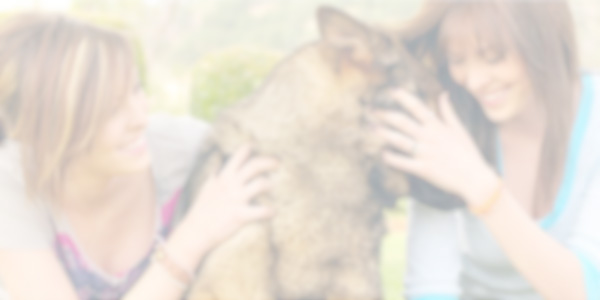What Every Dog Must Learn
10 Things Every Dog Must Learn: The First Five
(Besides Potty Training)
1. How to be social with people
This is a necessity in today’s world, particularly for anyone wishing to have a dog that they can confidently take in public. Canine behaviorists have demonstrated that most socialization with the world at large must happen by 16 weeks of age (4 months) in order for the puppy to develop into a well-adjusted adult. Keeping a dog isolated at home past this mark can result in a dog that is uncomfortable, nervous, shy, and fearful of the world outside their homes.
This does not mean that a young puppy or new dog should be dragged to every dog park and pet store in the area in order to make him “social”. Outings must be planned carefully; the goal is to bring the puppy into controlled contact with people of all ages, shapes, and sizes in a positive and rewarding manner. Nor does it mean forcing a reserved and aloof puppy to be a social butterfly. Not all dogs enjoy being petted by other people, but it is important to teach these dogs how to accept and tolerate overtures from approved strangers, even if the dog does not normally make them.
2. How to be crated and left alone
Crates are excellent for quiet time and nap time, for protecting your home from puppy jaws and piddle puddles while you are gone (or asleep), for timeouts when the dog is overly exuberant and rambunctious, for controlling his access to toys or the house, and for traveling. Most dogs also enjoy the “den” concept offered by a crate. Even if someone will be home with the dog most of the time, it is still important to teach a young dog that it is perfectly normal and safe to be left alone. Otherwise, you may end up with a dog that has full-blown separation anxiety, and cannot be left alone without crying, pacing, and working itself into a panic.
3. How to appropriately play with humans
Appropriate games for dogs to play are interactive games like Fetch, Tug, and Nosework games (such as learning to search for biscuits, treats, or toys that you have hidden around the house or yard). Games like Keep Away, Chase and Nip, and even Bark Incessantly at My Human Until They Throw the Ball are inappropriate, and should result in an immediate end to all fun and games. Play only continues when the dog plays by your rules. Of course, this implies that you HAVE rules for playtime; these should be determined before the dog even comes home. What games do you want him to play, and in what way? What is acceptable and not acceptable? How will you teach the acceptable behaviors, and discourage the inappropriate ones?
4. How to be handled all over
Over the course of your dog’s life, his teeth must be checked, ears cleaned, toenails clipped, temperature taken, paws handled to check for injuries, etc. The dog WILL need to be handled by you and by a vet at some point, so this is something that must be imprinted positively and early on. Teaching a dog to be handled appropriately makes these chores much easier on the dog, handler, veterinarian, groomer, and anyone else coming into contact with your animal.
This process actually starts with a good breeder. Good breeders handle their puppies as soon as they are born, and accustom them to having their paws touched and held, nails trimmed, ears and tails touched, mouths opened gently. This type of handling should continue with the new owners; they must continue to handle the puppy’s feet, tail, ears, and mouth almost daily, even if they aren’t trimming toenails or cleaning ears. The puppy should always be rewarded for these touches, so that it views such contact as a rewarding experience.
5. How to learn
Dogs begin learning about their new homes the minute they arrive in them. Teach them from the very beginning that there are rules, routines, and expectations that govern their lives in their new home; otherwise, they begin to create their own. Even young puppies can be taught the basics of learning how to learn: desired behavior = reward. It is up to you, the handler, to show your puppy or dog what behaviors are desired. Once this connection is made (that certain behaviors result in good rewards), the dog is now on his way to learning that words have meaning, that they can be associated with a specific behavior, and that doing those behaviors are rewarding.
Next blog, we will discuss the next five things every dog must learn. Stay tuned!

